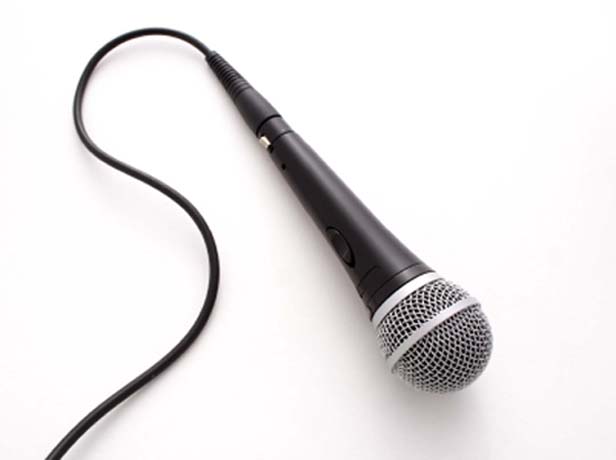To insure that our microphone does not fail you during a speech, you have to make sure that you pick out the right one. There are several different kinds of mics available and each one has a different directionality and responds to frequency in a unique way.
Choosing the right microphone
If you are going to give a speech, then look for a microphone that has the lowest possible directionality. This will allow the mic to concentrate on one source of sound, namely your voice.
The frequency response of the microphone is an essential factor and in most cases, having one with a flat response pattern works well.
Another rule is that, the lower the impedance of the mic, the better is its performance. This is often mentioned on the packaging of the box. Mics with higher impedance have a lower level of performance when they are attached to long cables so for a speech, this will not work well.
A good mic for speech should be able to filter out any extra sounds that may be in the background when you are giving the speech. If somebody coughs backstage, your mic should not be sensitive enough to pick it up.
To insure you have a good microphone, choose one that has gone through a controlled environment test. This will insure that your speech goes off without a hitch.
Positioning your mic
How you place your mic in relation to you has a great affect on how you will sound. If the mic is too close to you, then chances are, your voice is going to sound like it is garbled or booming. This is something that you can work out with the sound engineer. It is also something that comes to you after you have had some experience handling a mic. When you position your mic, make sure that there is nothing on or around you that could bang into the mike and create an interference of sorts.
Microphones are often plugged into amplifiers; they distribute the sounds that go into mics. Placing the cord of the mic into the right socket will ensure that sounds do not overlap with anything else in its surroundings.
Using the right mount
It is important that you use the right kind of mount for your mike. If you are comfortable with walking and talking and you like to use your hands when you talk, then the wireless lapel mike is by far the best option. Depending on the size of your audience, you can decide on the range of the wireless box. This is clipped onto the lapel of your shirt and the sound levels are controlled by an engineer.
A handheld mic is best used by someone who knows how to judge the right distance between the mouth and the mic and needs to hold something to help with his confidence or persona.
Finally, the mike that comes with an adjustable stand is best for those who are planning to use cards, signs or need their hands for other things during a part of their speech.
Following the tips above for correct microphone usage will help you give a great speech.
Roger Leeland is a musician and writer who is often the master of ceremonies at events and weddings. As such, he has a good understanding of audio visual equipment needs and also effective speech delivery. By sharing what he knows, he hopes to make speech delivery easier.

